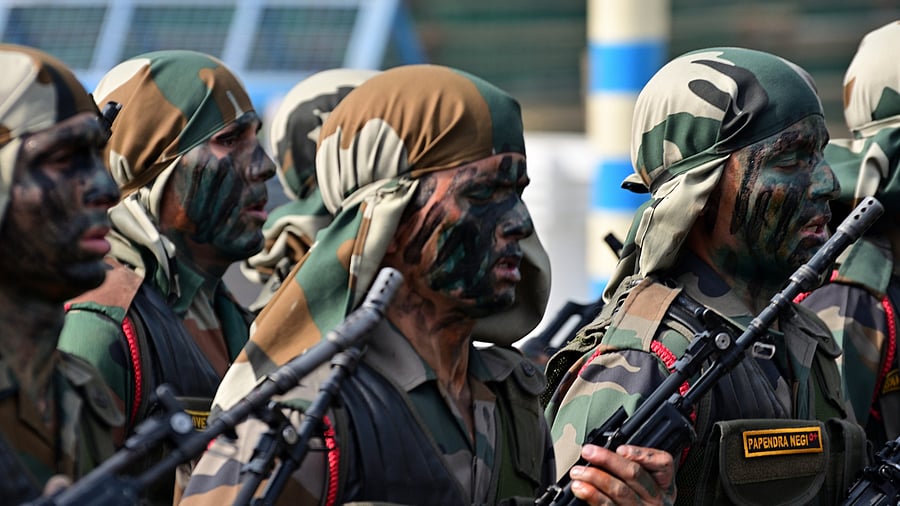
Members of the Indian Army
Credit: iStock Photo
Indian Army Day is celebrated on January 15 each year to honour the nation's armed forces and the sacrifices they make.
While the event was earlier always observed in Delhi, the Indian government decided to rotate it among states, and this year, the Army Day is being held in Pune, Maharashtra, marking the third such celebration outside the national capital.
History
Field Marshal Kodandera M. Cariappa, on Jan 15, 1949, became the first Indian Commander-in-Chief of the Indian Army, taking over from General F R R Bucher -- the last British chief. Since then, this day has been celebrated as Army Day.
Theme
This year's Army Day theme is 'Samarth Bharat, Saksham Sena' which emphasises the capabilities of the Army towards a stronger India.
Roadmap
Proactive steps are being taken to facilitate "seamless roll-out" of integrated theatre commands, harnessing indigenous solutions via AI and machine learning and boosting defence diplomacy is part of the Army's blueprint for the road ahead in 2025, declared 'year of reforms'.
In an announcement on January 1, Defence Minister Rajnath Singh had declared 2025 as the 'year of reforms', signalling a decisive shift towards a more agile, technologically advanced and combat-ready armed forces.
This declaration encompasses nine broad areas of focus aimed at transforming India's defence apparatus into a "21st-century powerhouse" capable of executing multi-domain integrated operations. The Indian Army has "swiftly aligned" its transformative initiatives with this roadmap to "chart its course towards a future-ready army", defence sources said on Wednesday, as per news agency PTI.
The 'year of reforms' comes on the heels of the Army earlier declaring the 'year of transformation (2023) and 'year of technology absorption' (2024-2025).
However, acknowledging the "long gestation period required for meaningful change", the Army has already identified 2023 to 2032 as the 'decade of transformation'. The announcement of 2025 as the 'year of reforms' "provides strategic direction and impetus to this long-term initiative", a source said.
The Army's comprehensive approach to reform is anchored across five key pillars -- jointness and integration; force restructuring, modernisation and technology infusion; systems and processes; and human resource management, sources in the defence establishment said.
"Proactive steps are being taken to facilitate the seamless roll out of integrated theatre commands," the source said.
Initiatives such as "joint doctrines, shared tactics, and cross-service staffing" between the Army, Navy and Air Force are "fostering a synchronised approach to operations", the sources said.
The integration of Central Armed Police Forces (CAPFs) and inter-ministerial postings are further enhancing interoperability, creating an ecosystem of shared understanding, synchronized capability development and operational efficiency, they added.
As part of its blueprint for 2025, the Army has also planned to harness emerging domains and technologies such as AI and machine learning.
The Army is also undertaking a "thorough review of legacy practices and structures" to enhance operational efficiency.
Also, human resource management, a cornerstone of the Indian Army’s strength, is receiving "renewed focus".
Quotes
“If death strikes before I prove my blood, I swear I’ll kill Death" – Captain Manoj Kumar Pandey
“We fight to win and win with a knockout because there are no runners-up in war" – General JJ Singh
“If a man says he is afraid of dying, he is either lying or is a Gorkha" – Field Marsal Sam Manekshaw
“Yeh Dil Maange More" – Captain Vikram Bakra (Kargil War)
“Only Best of the Friends and Worst of the Enemies Visit Us" – Indian Army (Ladakh)
“One for all and all for one" – Indian Army.
(With PTI inputs)
